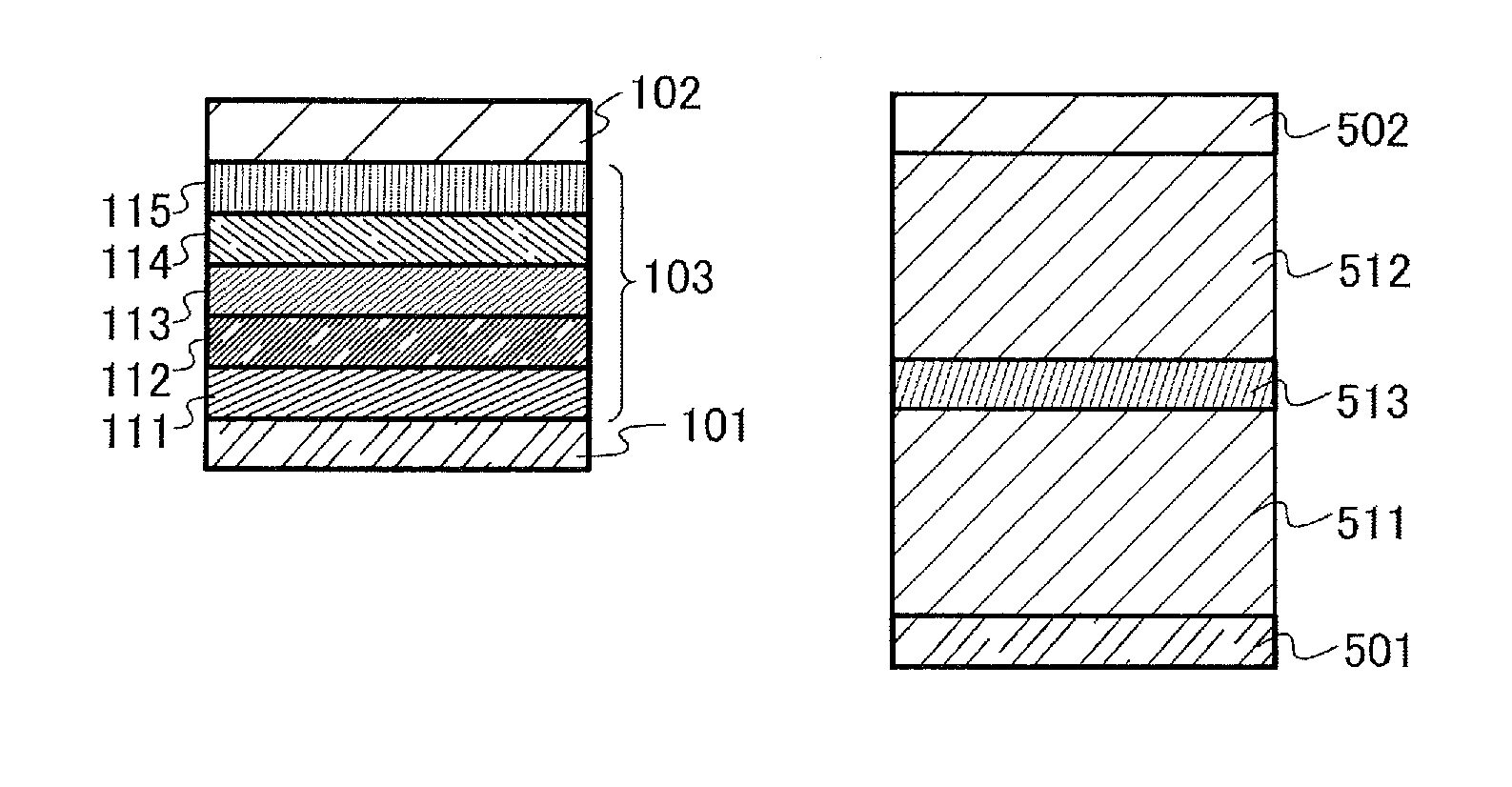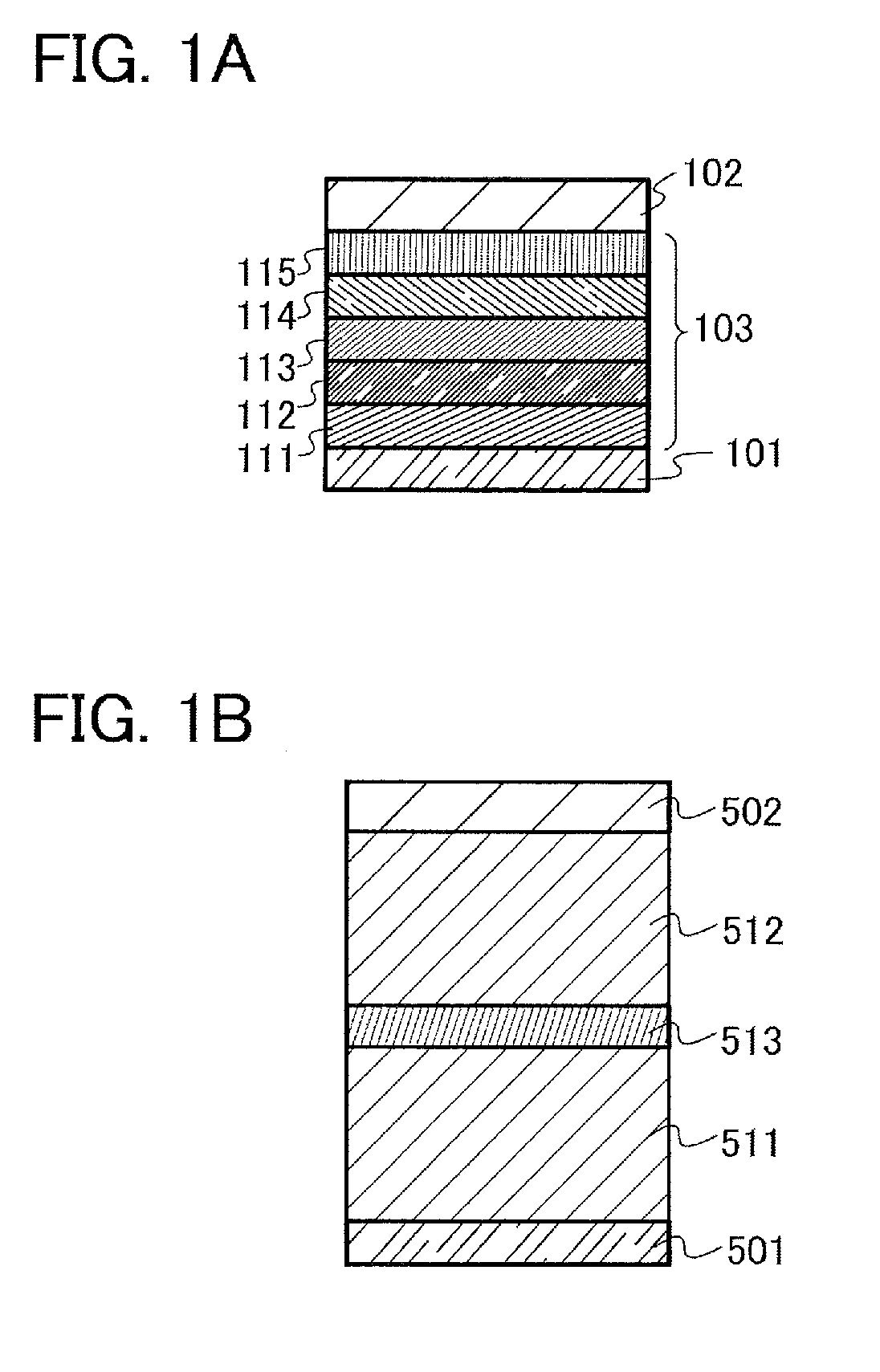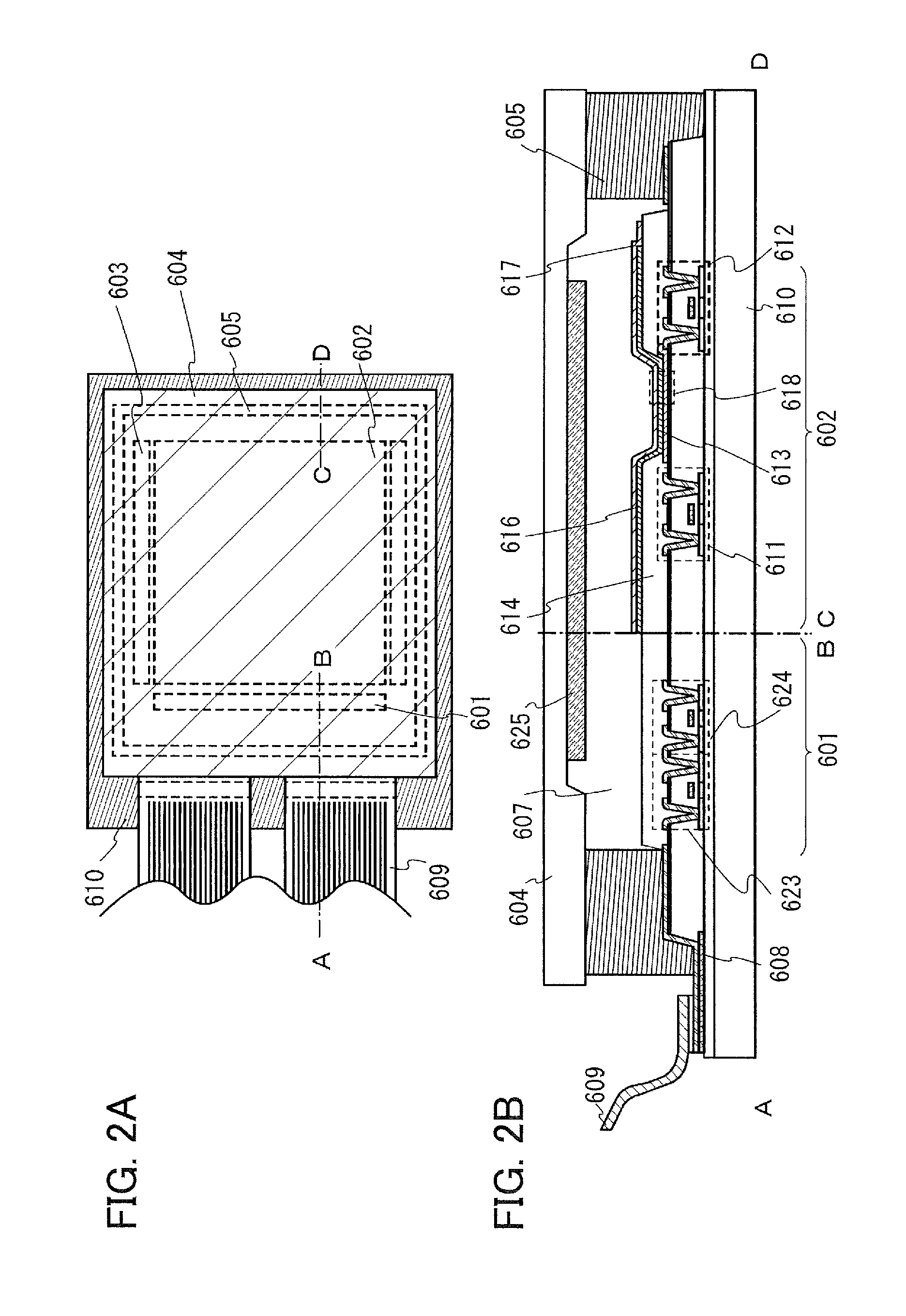Heterocyclic compound, light-emitting element, light-emitting device, electronic device, and lighting device
- Summary
- Abstract
- Description
- Claims
- Application Information
AI Technical Summary
Benefits of technology
Problems solved by technology
Method used
Image
Examples
embodiment 1
[0081]In this embodiment, a heterocyclic compound of one embodiment of the present invention is described. One embodiment of the present invention is a heterocyclic compound represented by the following general formula (G1).
[0082]In the general formula (G1), A1 and A2 each independently represent any of a substituted or unsubstituted carbazolyl group, a substituted or unsubstituted dibenzofuranyl group, and a substituted or unsubstituted dibenzothiophenyl group; B represents a substituted or unsubstituted dibenzo[f,h]quinoxalinyl group; Ar represents an aromatic hydrocarbon group having 6 to 13 carbon atoms; the aromatic hydrocarbon group may have a substituent; and substituents of the aromatic hydrocarbon group may be bonded to each other to form a ring.
[0083]Another embodiment of the present invention is a heterocyclic compound represented by the following general formula (G2).
[0084]In the general formula (G2), A1 and A2 each independently represent any of a substituted or unsubst...
embodiment 2
[0136]In this embodiment, a light-emitting element of one embodiment of the present invention is described with reference to FIGS. 1A and 1B.
[0137]Accordingly, one embodiment of the present invention is a light-emitting element including a compound comprising a dibenzo[f,h]quinoxaline ring and two hole-transport skeletons, where the dibenzo[f,h]quinoxaline ring and the two hole-transport skeletons are bonded to an aromatic hydrocarbon group.
[0138]A compound with a quinoxaline skeleton has a high electron-transport property, and use of such a compound for a light-emitting element enables the element to have low driving voltage. However, a quinoxaline skeleton has a planar structure. Since a compound having a planar structure is easily crystallized when formed into a film, use of such a compound for a light-emitting element causes the element to have a short lifetime. Furthermore, a quinoxaline skeleton is poor at accepting holes. When a compound that cannot easily accept holes is use...
embodiment 3
[0183]In this embodiment, one mode of a light-emitting element (hereinafter, also referred to as a stacked-type element) having a structure in which a plurality of light-emitting units is stacked is described with reference to FIG. 1B. This light-emitting element is a light-emitting element including a plurality of light-emitting units between a first electrode and a second electrode. Each light-emitting unit can have the same structure as the EL layer 103 described in Embodiment 2. In other words, it can be said that the light-emitting element described in Embodiment 2 is a light-emitting element having one light-emitting unit and the light-emitting element of this embodiment is a light-emitting element having a plurality of light-emitting units.
[0184]In FIG. 1B, a first light-emitting unit 511 and a second light-emitting unit 512 are stacked between a first electrode 501 and a second electrode 502, and a charge generation layer 513 is provided between the first light-emitting unit...
PUM
 Login to View More
Login to View More Abstract
Description
Claims
Application Information
 Login to View More
Login to View More - R&D
- Intellectual Property
- Life Sciences
- Materials
- Tech Scout
- Unparalleled Data Quality
- Higher Quality Content
- 60% Fewer Hallucinations
Browse by: Latest US Patents, China's latest patents, Technical Efficacy Thesaurus, Application Domain, Technology Topic, Popular Technical Reports.
© 2025 PatSnap. All rights reserved.Legal|Privacy policy|Modern Slavery Act Transparency Statement|Sitemap|About US| Contact US: help@patsnap.com



